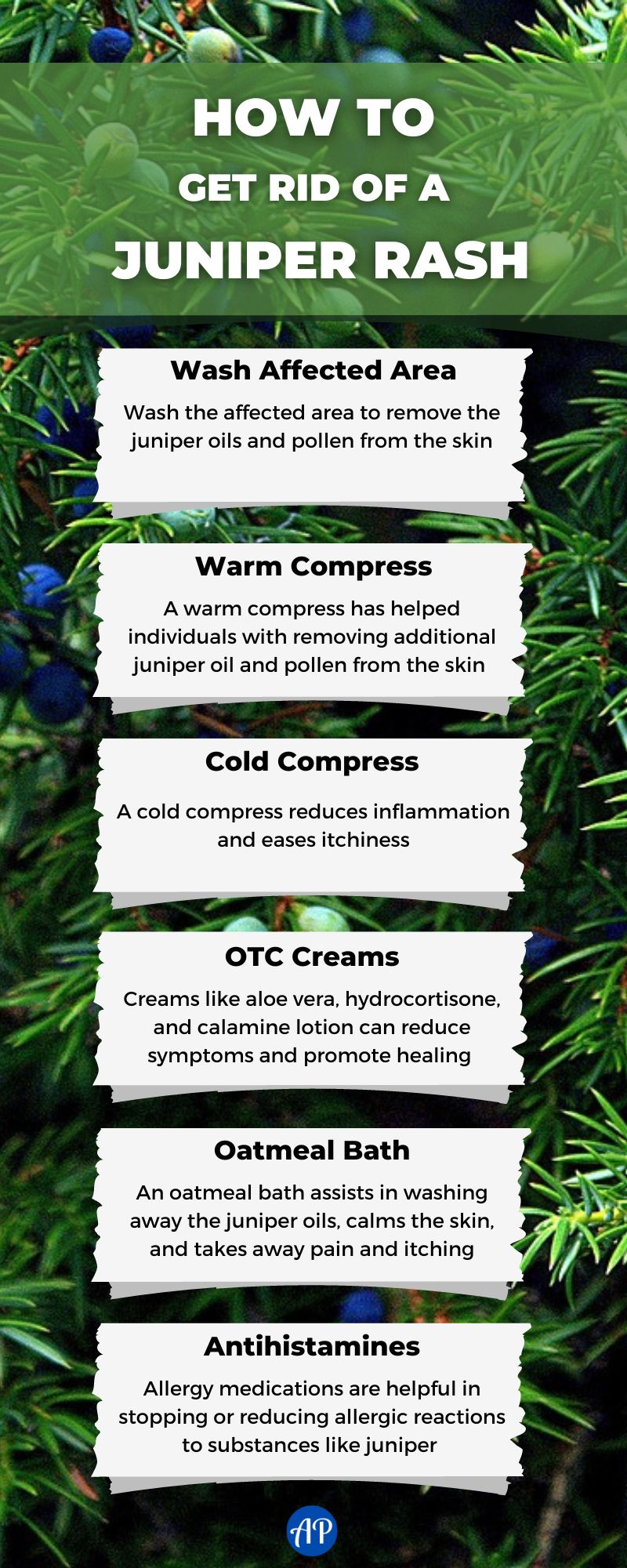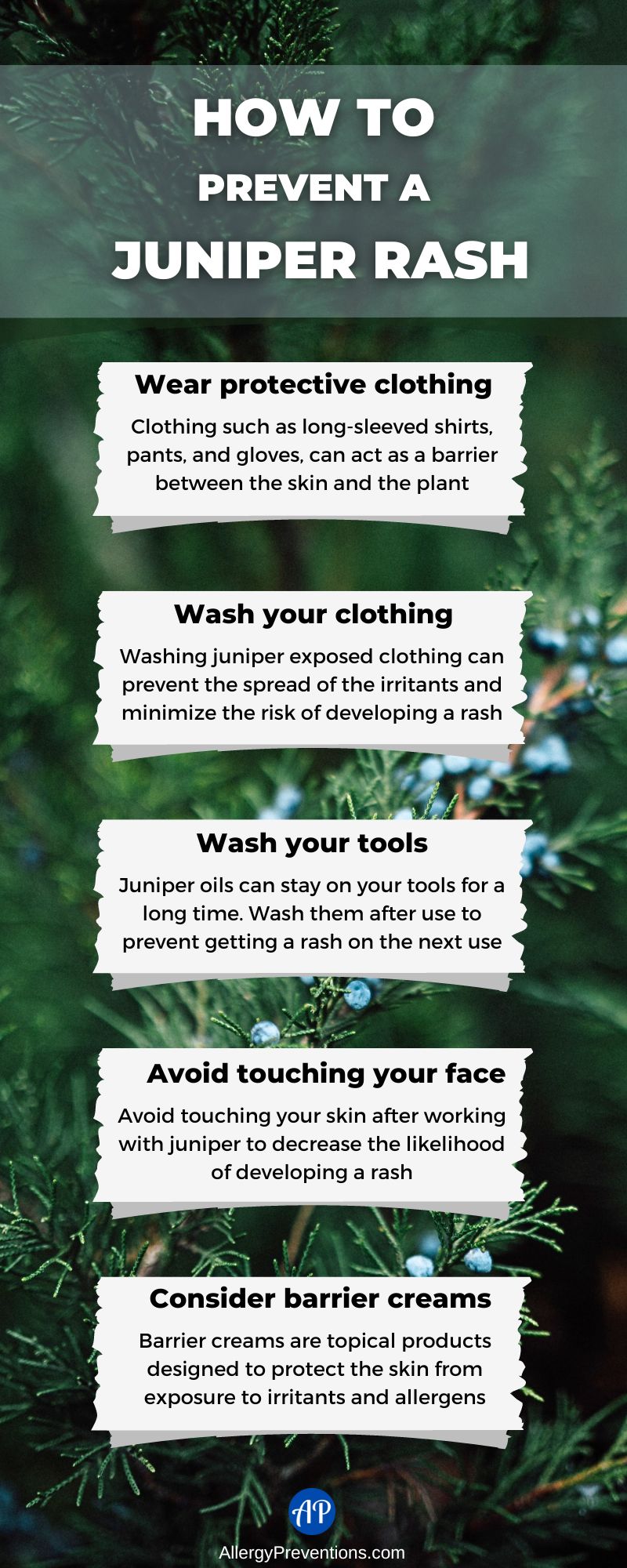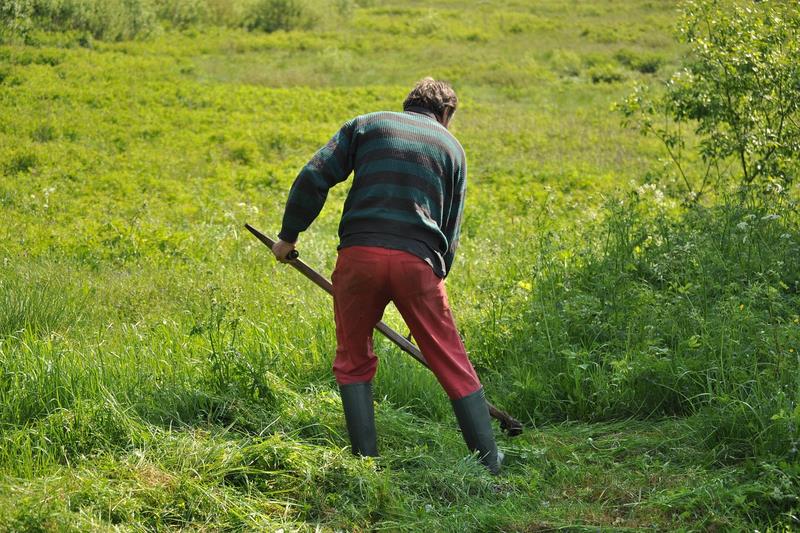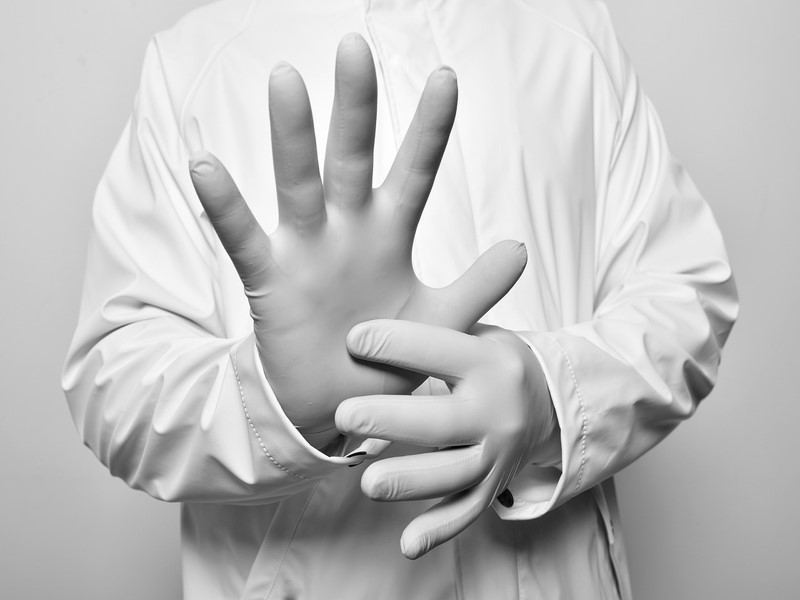A juniper rash can be itchy, painful, and uncomfortable, making it necessary to find ways to get rid of it. This article will provide you with effective tips on how to get rid of juniper rash and prevent it from recurring.

As an Amazon Associate, I earn from qualifying purchases.
Table of Contents
What is a Juniper Rash?
A Juniper rash is a rash that develops when someone with a juniper allergy comes in contact with a juniper plant. The oils in the plant can make some people have an allergic reaction, which can cause a rash (contact dermatitis).
Symptoms of a Juniper Rash
The symptoms of juniper rash can vary depending on the severity of the reaction. Common symptoms include:
- Blisters or bumps on the skin
- Dry and cracked skin
- Itching and burning sensation
- Redness and inflammation of the skin
- Swelling and tenderness of the affected area
What Does a Juniper Rash Look Like?
The appearance of a juniper rash can look different for everyone. Typically, the rash looks like a slightly raised area surrounded by redness or inflammation. Depending on the severity, the rash may even have deep blisters or lesions.

This image is of a 47-year-old male who went into some bushes to grab a ball. His plant exposure caused him to develop itchy, blistering skin.
The rash may be localized to the area of skin that came into contact with the plant or it may spread to other parts of the body if the irritant is transferred by touch.
How to Get Rid of a Juniper Rash

Getting rid of juniper rash requires a combination of home remedies and medical treatments. Here are some effective ways to get rid of juniper rash.
Wash the Affected Area
Wash the affected area with warm water and mild soap to remove any juniper plant oils or pollen. Washing the affected area also helps to soothe the skin and reduce inflammation. The goal is to remove those oils so you can stop having a reaction.
Apply A Cold Compress
Apply a cold compress to the affected area to reduce itching and inflammation. You can use a clean towel soaked in cold water or a bag of ice wrapped in a towel. Apply the compress for 10-15 minutes, several times a day.
Try A Warm Compress
I have researched that some individuals found relief by using a warm compress. A warm compress can help send blood flow to the affected area, which could make your symptoms better.
But, a bit of warning, this may also make things worse, so be careful. Additionally, I believe that a warm compress may help absorb any juniper oil that was remaining after washing the skin.
Use Over-the-counter Creams
There are several types of creams that can be used for a juniper rash to help soothe the skin and reduce inflammation. Some options include:
- Aloe vera gel
- Antihistamine cream
- Calamine lotion
- Hydrocortisone cream
It is important to speak with a healthcare professional before using any new creams or treatments for a juniper rash, especially if you have a severe or persistent rash.
Take an Oatmeal Bath

An oatmeal bath is a natural juniper rash remedy that can provide your skin with some relief from pain and itching. Here are the basic steps for an oatmeal bath:
- Grind oatmeal into a fine powder
- Fill the bathtub with warm water
- Add about 1 cup of ground oats
- Soak for 10 – 15 minutes
- Rinse in warm water
- Pat dry your skin
- Apply a non-scented moisturizer
That’s it! Taking an oatmeal bath is a simple and effective way to soothe and nourish your skin.
Take Antihistamines
Antihistamines can help to reduce itching and swelling caused by juniper rash. Take the medication as directed on the label or consult your doctor for the appropriate dosage.
Seek Medical Treatment
If the rash is severe and causing you a lot of discomfort, seek medical treatment. Your doctor may prescribe oral corticosteroids to calm the reaction or recommend other treatments.
How to Prevent a Juniper Rash

Preventing juniper rash involves avoiding exposure to juniper plants and taking precautionary measures when working around them. Here are some tips to prevent juniper rash.
Wear Protective Clothing

Protective clothing such as long-sleeved shirts, pants, gloves, and closed-toe shoes can act as a barrier between the skin and the plant. Covering the skin reduces the likelihood of direct contact with the plant’s irritants, such as the oils found in the leaves and branches.
Surgical Gloves

I have learned that in the Bonsai community, they recommend wearing surgical gloves when handling juniper plants. Surgical gloves are worth a shot if you are having issues with using regular garden gloves.
Wash Your Clothes

If you suspect that your clothes have been exposed to juniper tree irritants, it is best to wash them as soon as possible to prevent the spread of the irritants and to minimize the risk of developing a rash or allergic reaction.
By washing your clothes, you can remove any lingering irritants that may be present on the fabric. It is recommended to use a detergent that is strong enough to remove the oils but gentle enough to avoid damaging the fabric.
Additionally, it is important to wash the clothes in hot water to ensure that the irritants are effectively removed.
Wash Your Tools

The juniper tree oils and pollen can stay on any trimmers, sheers, axes, etc. for a long time. Wash your tools to remove juniper contamination. If you do not wash the juniper tree oils from the tools, you could reexpose yourself the next time you use them.
Avoid Touching Your Face

If you touch your skin after working with juniper, you may spread the irritants to other parts of your body, increasing the likelihood of developing a rash or allergic reaction. Additionally, if you touch your face or eyes, you may cause further irritation or even more severe reactions.
Consider Barrier Creams

Barrier creams are topical products designed to protect the skin from exposure to irritants and allergens. They can be used to prevent a juniper rash by creating a barrier between the skin and the plant’s irritants.
The IvyX™ Pre-Contact Solution is the most popular barrier cream that protects against poison oak, poison ivy, poison sumac, and other environmental irritants (like juniper). I have not personally tried this solution, but the IvyX Amazon reviews look very promising.
Barrier creams tend to contain ingredients such as silicone, petrolatum, and zinc oxide, which are not my favorite ingredients, but it is a preventive option. They are typically thick and heavy, forming a protective layer over the skin that can last for several hours.
Learn More About Juniper Allergies
Juniper Allergies: Facts, Symptoms, Treatments & Prevention
Foods to Avoid with Juniper Allergies
Juniper Rash Frequently Asked Questions
Is a juniper rash contagious?
No, juniper rash is not contagious and cannot be spread from person to person. An exception would be if the oils were transferred from person to person (i.e. a handshake with someone who had juniper oils on their hands).
How long does a juniper rash last?
Juniper rash can take anywhere from a few days to several weeks to go away depending on the severity of the reaction. Sometimes the plant makes small cuts on the skin which can take longer to heal.
Are there any natural remedies for juniper rash?
Some natural remedies that may help to soothe the symptoms of juniper rash include aloe vera, oatmeal baths, and a cold compress. However, it is important to consult your doctor before trying any natural remedies, as they may not be suitable for everyone.
Are people allergic to juniper trees?
Yes, people can be allergic to juniper trees. The pollen from juniper trees can trigger an allergic reaction in some individuals, leading to symptoms such as itchy and watery eyes, runny nose, sneezing, and congestion. In some cases, exposure to juniper pollen can also cause skin rashes and difficulty breathing.

